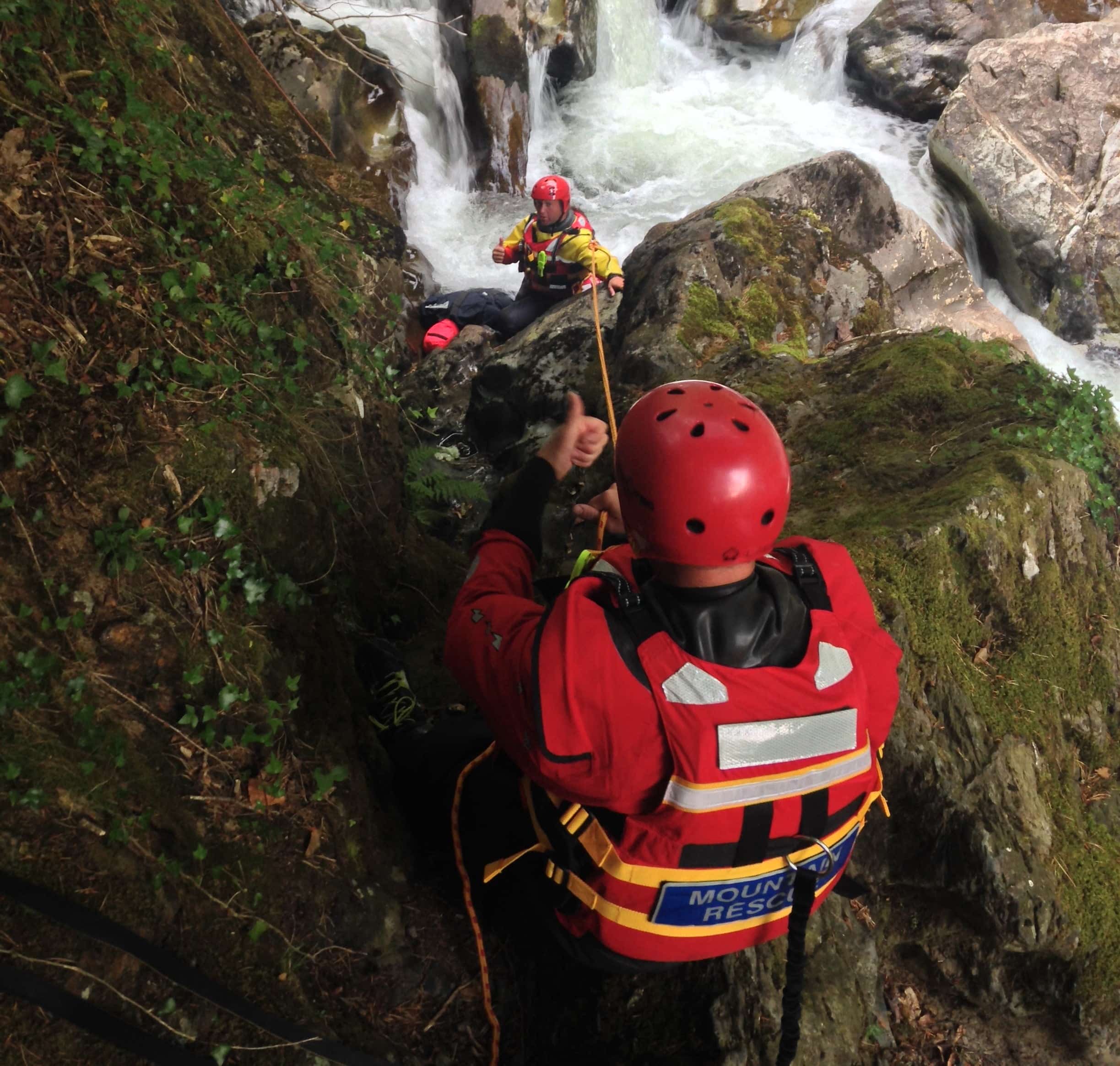Mountain Rescue – How it all started
In the late eighteenth century a new generation of writers and artists began to inspire adventure in the hills; walking and climbing until their hearts and minds were content. In those days however there was no rescue organisation in case of accidents. The badly injured could easily die at the scene or would be rescued by ad hoc, and hastily assembled, rescue parties. Often injuries would be worsened by the journey back to safety, across rough terrain.
A tragic incident on Scafell, in the Lake District, in 1903, was a pivotal moment in mountain rescue history. Four climbers tumbled to their deaths and a shocked climbing community began to realise the need for organised rescue resources. Within a year rudimentary first aid and mountain rescue equipment began to appear in key geographic areas.
Fast forward to another accident in 1982 in the Peak District and the extreme conditions faced by rescuers. A climber fell 40 feet into an adjacent gully and broke his skull and thigh bone. Relays of runners brought up warm blankets and water bottles, a splint was made from a rucksack frame and a makeshift stretcher was built using a nearby finger post.
The patient was transported over rough terrain, by relays of stretcher bearers for four agonising hours to the nearest ambulance access point. The operating surgeon later remarked that the patient needed a blood transfusion before he could be operated on, and that the transport and shock to his body had ultimately necessitated the amputation of a limb.
This incident led to the formation of the Mountain Rescue Committee. Today in England and Wales there are 48 Mountain Rescue Teams organised across nine regions. Each one is a registered charity and depends greatly on volunteers and donations.
Different scenarios require different skills to be trained.
The strapline for the MRT is “So much more than mountains”, and this is well justified. Teams are called out a moment’s notice and often in the worst of conditions. They could be called upon to rescue people half way up a cliff face or buried under an avalanche, but equally they may be faced with rescuing people from fast flowing rivers and streams, or in urban flood scenarios. Cave rescue specialists are called upon to rescue cavers, but a typical mission may be simply to find missing or lost persons, perhaps suffering from Alzheimers’, with the help of specially trained dogs.
Not surprisingly MRT rescue volunteers need to be fit and strong and possess climbing and rope skills, but they also need to be able to administer basic first aid, including airway management techniques. All members are assessed and certificated every three years and undergo regular training.
Ruth Lee offers a range of manikins to reflect the various scenarios and training needs of the MRT. Our Duty manikin is perfect for broad based search exercises, especially with our ‘Shoutbox’ optional accessory. Our Working-at-height manikin is ideal for practising rope and harness work, as it avoids ‘slumping’ when suspened. For water rescue scenarios we have developed our Search and Rescue model, which will float on or in water (a Duty manikin will become saturated with water and will be too heavy!). For hard to access terrains we offer an ultra- lightweight dummy which can be folded up and carried in a purpose made rucksack for easy transportation. This manikin is also equipped with RECCO reflectors to facilitate avalanche searches. Finally, we offer manikins with anatomical features to practice CPR and Airway-Management skills.
We agree with the MRT: It’s more than just mountains. We applaud their bravery and admire their skills. Why not volunteer and/or donate to this great cause?
Note Part of this content is taken from the MRT website: www.mountainrescue.org.uk
Picture provided courtesy of Aberglaslyn MRT
